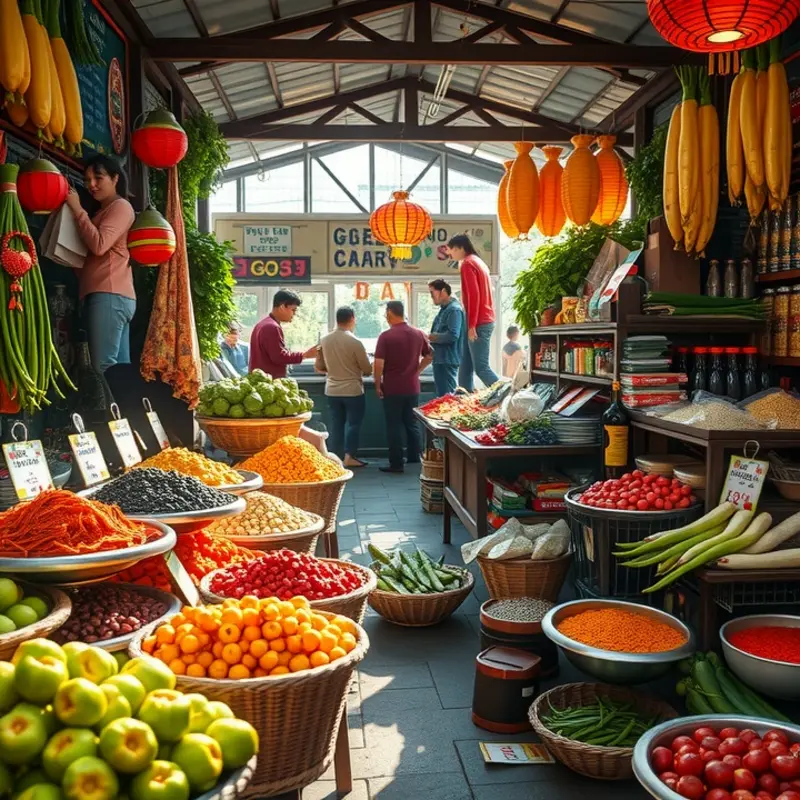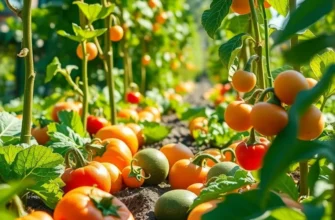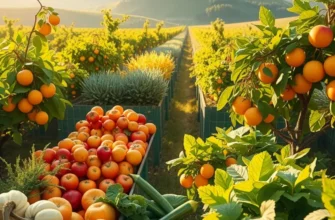Every corner of the globe is home to cherished food shrines—places where culinary traditions are celebrated and preserved. These vibrant epicenters of flavor invite adventurous food enthusiasts and culturally curious wanderers alike to explore a medley of tastes and tales. From age-old recipes passed down through generations to unique rituals surrounding food preparation, food shrines offer not just sustenance but stories that connect us to the hearts of communities. Join us as we traverse the globe, uncovering culinary shrines that showcase the beauty of international cuisine.
The Temples of Taste: Culinary Shrines in Asia

Asia is a continent where the past and future coalesce in myriad ways, especially in its culinary spaces. Journey through the bustling street food bazaars of Bangkok, where the aroma of sizzling noodles shifts to the fragrant zest of curries. Here, every bite tells the story of tradition fused with the contemporary pulse, drawing both locals and travelers into its savory embrace.
Venturing into Kyoto, the tea houses offer a different kind of oneness with food. These serene sanctuaries elevate the simple act of drinking tea into a ritualistic experience. Zen principles guide the meticulous preparation and presentation, making each sip a meditation on balance and harmony. The matcha tea ceremony, with its roots tracing back centuries, is less about quenching thirst and more about a moment of introspection paired with wagashi—delicate confectioneries that complement the bitter brew.
In the city of Mumbai, the iconic Parsi cafes stand as cultural landmarks, bridging colonial history with the flavors of India. Often adorned with vintage decor, these havens serve up dishes that have become comfort food for many—a fusion of Persian and Indian culinary practices that celebrate the diversity and unity of the region’s history.
The spice markets across Asia, like those in Hyderabad or Chengdu, throng with vibrant displays of chilies, peppercorns, and star anise. These markets are more than mere trading spots; they are repositories of knowledge, where traders pass down culinary secrets from generation to generation. Here, the artists of flavor lovingly debate the merits of roasting versus grinding, encapsulating the essence of these culinary shrines.
Hong Kong’s dim sum houses further deepen this narrative of sacred dining. In these bustling teahouses, shared small plates foster community and conversation. Each dumpling, steamed bun, and spring roll is crafted with precision, reflecting the city’s devotion to culinary excellence and family traditions. Yet, innovation is not lost here, as chefs often introduce modern twists to classic fillings, ensuring these traditions evolve with each generation.
While exploring Korea, one cannot ignore the bustling markets where fermentation reigns supreme. Kimchi, with its complex, spicy profile, is revered as both a staple and a tradition. Korean markets unfurl a tapestry of side dishes, or banchan, showcasing the legacy of flavors fermented to perfection—a testament to patience and culinary artistry.
Asia’s culinary shrines also embrace sustainability, echoing the eco-smart trends seen globally. Many street food vendors and markets now incorporate practices that reduce waste and promote ethical sourcing of ingredients, reflecting a growing awareness of environmental impact. For more on integrating such sustainable practices in your own kitchen, consider reading about eco-smart kitchen storage.
The culinary shrines of Asia extend beyond mere sustenance to form a tapestry of shared history, innovation, and sustainability. They invite us to widen our palates and embrace the rituals that have sustained cultures through centuries. Engaging with these spaces offers a reverent acknowledgment of the past while savoring the vibrant present, making each journey a sacred bite into Asia’s variegated soul.
Culinary Cathedrals: Food Shrines in Europe

Europe’s culinary culture is as intricate and storied as its literature and art. Each dish is a chapter in the continent’s grand narrative. From the bustling markets of Barcelona to the serene vineyards of Tuscany, each region offers its own sacred culinary sites. These are not merely places where food is made; they are locations where tradition and technique are worshipped.
In France, the art of cheese making is revered with religious fervor. Regions like Normandy and Auvergne host artisan cheesemakers who carry on ancient methods. Visits to these fromageries reveal the secrets of ambiance in a cheese cave. Here, crafted beauties like Camembert and Roquefort are aged to perfection. The cheese is not merely savored; it is a link to the pastoral lifestyle that has shaped French cultural identity for centuries.
Vienna, known as much for its stately architecture as its legendary pastries, keeps centuries-old baking traditions alive. In the shadow of its gilded palaces, storied bakeries knead memories into every loaf. Confections like Sachertorte and Apfelstrudel transcend ordinary snacks, becoming edible legacies tied to the Habsburg Empire’s grand days. This homage to the sweet side of history ensures each bite is an exploration of Vienna’s social and cultural evolution.
Italian kitchens, particularly in regions like Emilia-Romagna, serve as temples to tradition. Here, pasta is crafted by hand, echoing ages of familial knowledge passed down through generations. The preparation of a simple ragu or the layering of lasagna bolognese become acts of devotion, engaging cooks in a ritual as rewarding as it is age-old. These dishes, born from seasonal ingredients and time-honored techniques, are a testament to Italy’s unwavering dedication to culinary excellence.
One cannot overlook the seafood rituals that define the Iberian Peninsula. The coastal regions of Spain and Portugal are revered for their maritime bounty. Fishermen, akin to shamans of the sea, deliver fresh catches that are transformed into divine meals. The meticulous preparation of dishes like Paella in Valencia isn’t merely cooking; it’s an invocation of sea, land, and sky working in harmony.
Ah, the breadth of flavors transcends mere sustenance. This sensory journey through Europe’s culinary cathedrals evokes the deepest rituals of culture and community. These shrines of taste do more than feed; they foster a shared sense of identity and continuity. Each gathering, whether around a French cheese board or within the cozy warmth of an Italian osteria, reinforces the profound connection between people, place, and palate.
For those eager to emulate the efficiency of seasonal European cooking in their own kitchens, exploring minimal prep dinner ideas can inspire delightful simplicity. Transforming fresh ingredients into art, the European way, underscores that good food is the universal language of love and tradition.
Final words
Exploring culinary shrines offers more than just a taste of diverse cuisines; it presents a unique lens through which we can understand cultural heritage and community connections. Each dish, market, or food stall carries with it the essence of history, tradition, and human creativity. As food enthusiasts, stepping into these sacred spaces can ignite your passion for gastronomy and deepen your appreciation for the stories behind each meal. Whether it’s the ritual of sharing a traditional dish with loved ones or discovering new flavors, the exploration of food shrines is a culinary journey that enriches both your palate and your soul.








